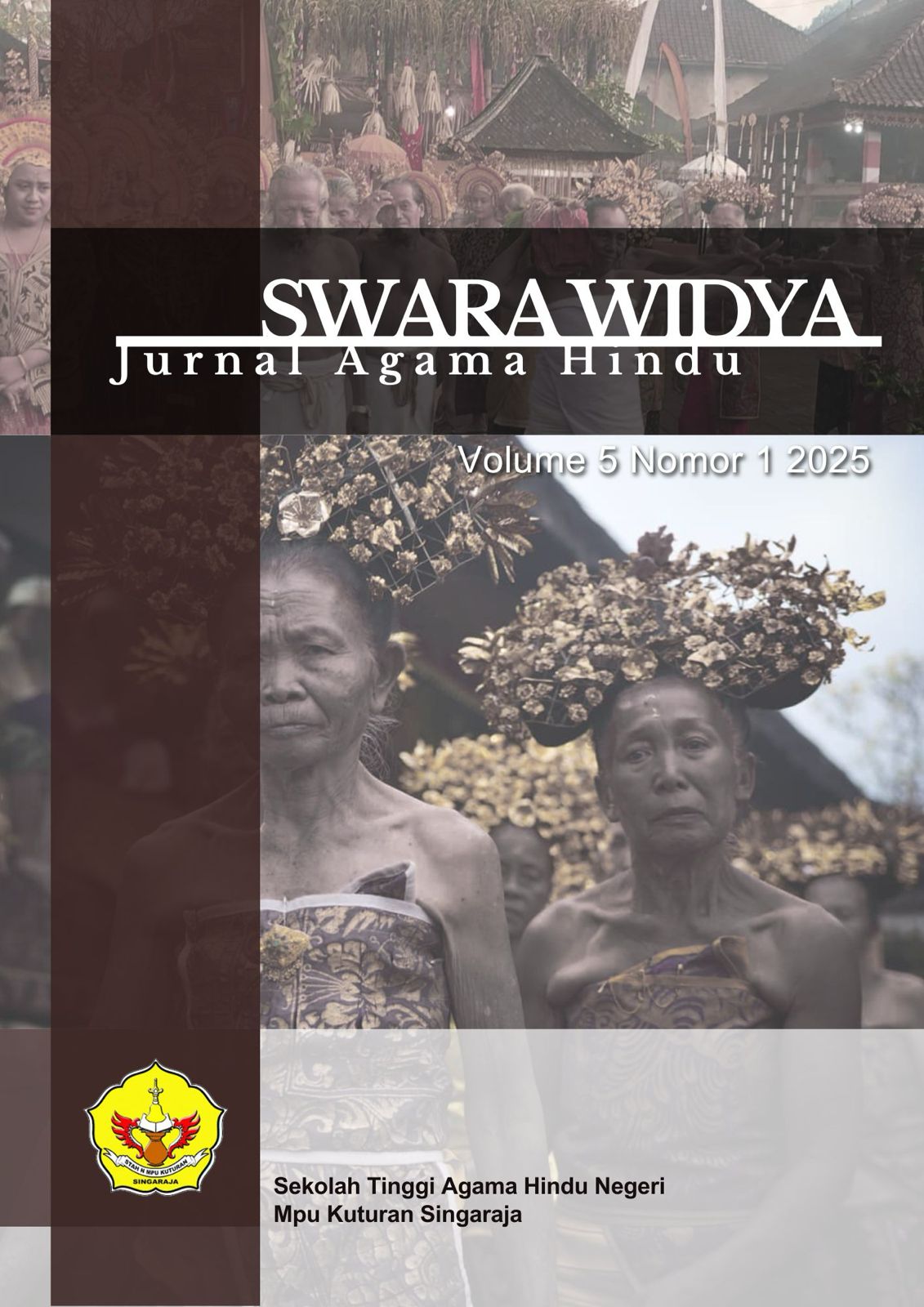KAJIAN TEOLOGI HINDU TRADISI NGULIANG AJANG DI PURA PEMAKSAN RAMBUT NAGA DESA TUKADMUNGGA KECAMATAN BULELENG KABUPATEN BULELENG
Keywords:
Nguliang Ajang Tradition, Hindu Theological Meaning, Pemaksan Rambut NagaAbstract
Nguliang Ajang is a tradition that is carried out by the people of Tukadmungga Village, Buleleng District. The Nguliang Ajang tradition carried out by the people of Tukadmungga Village is a special ceremony that is carried out when there is a mangku jro who dies. The purpose of this study is to find out the Hindu Theological Study of the Nguliang Ajang Tradition at Pemaksan Rambut Naga Temple, Tukadmungga Village, Buleleng District, Buleleng Regency. This research was conducted using a qualitative research method by applying a phenomenological approach. The theories used in this study are: Religious Theory, Structural Functional Theory, and Symbolic Interactionism Theory. The research conducted raised three problem formulations, namely: 1) How is the Process of Implementing the Nguliang Ajang Tradition at Pemaksan Rambut Naga Temple, Tukadmungga Village, Buleleng Regency, 2) How is the Function of the Nguliang Ajang Tradition at Pemaksan Rambut Naga Temple, Tukadmungga Village, Buleleng Regency, 3) What is the Theological Meaning of the Nguliang Ajang Tradition at Pemaksan Rambut Naga Temple, Tukadmungga Village, Buleleng Regency. Based on the three formulations of the problem, the research carried out obtained the following results: 1) the process of implementing the tradition of nguliang ajang begins with the preparation of the event which is continued with the table and mepiuning which is carried out 3 days before the event starts, continued by nunas at the paibon penglingsir which is ceremonial, followed by the handover of ceremonial facilities that will be used to the temple, After that it was continued with the implementation of the peak of the nguliang ajang tradition event, after the peak of the event was continued with nglungsur and nunas the event then ended with the return of Dewa Hyang to the paibon ring. 2) The function of the Nguliang Tradition is divided into three parts, namely the function as an increase in sradha, the function as a debt payer related to the Tri Rna, and the family function as a unifier and maintain family harmony. 3) The meaning contained in the nguliang ajang tradition is divided into three parts, namely 1) religious meaning where the nguliang ajang tradition has a deep rally meaning both from social, spiritual, and cultural aspects. 2) the meaning of Hindu theology related to Hindu religious spiritual values that are connected to the teachings of Tri Rna or three debts including the Dewa rna debt to paradevas, pitra rna debt to ancestors, and rsi rna debt to the rsi.

